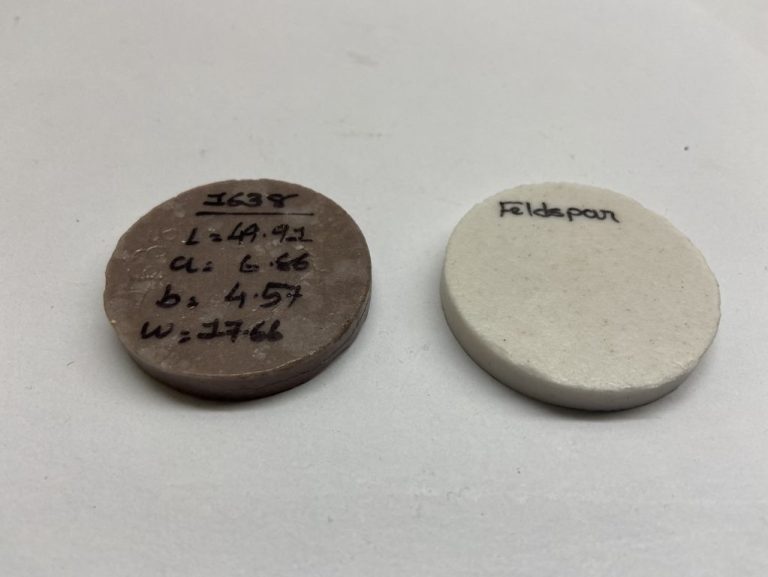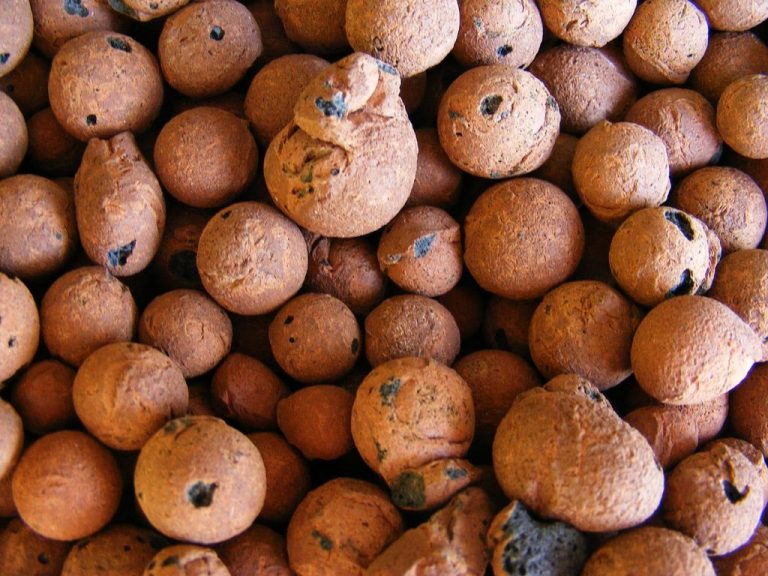Where Is Red Clay Usually Found?
What is Red Clay?
Red clay is a type of soil that contains a high percentage of iron oxide. This gives it a distinct reddish color. The red color is caused by the oxidation of iron as the clay weathers. Red clay typically consists of very small particles, less than .002 millimeters in diameter. The small size of the particles gives red clay a smooth, sticky texture when wet. Red clays are classified as mineral soils and form in warm, moist climates under deciduous forest vegetation.
The reddish hue of red clay comes from the iron oxide content. But red clay also contains other minerals like quartz, mica, feldspar, and kaolinite. The composition can vary based on the parent material it forms from. But the iron oxide content causes thedistinct red color that defines these soils.
Common Locations of Red Clay
Red clay can be found in several regions around the world. Some of the most notable locations include:
Southeastern United States – The red clay found in states like Georgia and Alabama is iconic for the region. It provides the distinctive red coloring in the Red Hills and Red Mountain areas.
Brazil – The red clay in Brazil is known as “terra roxa” and is highly valued for agriculture. It provides ideal conditions for growing coffee, soybeans, wheat, rice and more.
Africa – Much of Africa sits atop a large plateau of red clay and ancient crystalline rocks. Countries like Kenya, Uganda and Tanzania have extensive red clay deposits.
China – The lower and middle reaches of China’s Yangtze River feature substantial amounts of red clay. It was once used to make traditional Yixing teapots.
Climate and Geography
Red clay is typically found in hot, humid geographic regions with tropical or near tropical climates. The high temperatures, rainfall, and humidity in these areas contribute to the chemical weathering process that creates red clay.
Specifically, red clay often occurs in tropical rainforest areas. The abundant rainfall and warmth accelerate the breakdown of rocks and minerals, leaching out various compounds and developing the signature red hue of this type of clay. Southern China, regions of Africa, Central America, and northern South America with tropical forests are prime locations to find natural deposits of red clay.
Additionally, red clay can be found in more temperate areas that border the tropics. The southern United States, including states like Georgia and Alabama, contain significant amounts of red clay. Even though these locations lack tropical conditions year-round, their long, hot and wet summers provide enough chemical weathering to produce the clay.
In general, the combination of heat, rain, and lush vegetation found close to the equator provides ideal conditions for forming red clay soils consistently across the globe.
Underlying Rock
The type of bedrock that red clay forms over plays an important role in its creation. Red clay typically develops over crystalline igneous and metamorphic rocks that contain high amounts of quartz, feldspar, and mica minerals. The most common rock types underlying red clay deposits are:
Granite – This igneous rock contains quartz, feldspar, mica, and other minerals. As granite weathers chemically, it produces kaolinite clays that give red clay its distinctive coloration. Granite is found extensively in continental interiors.
Gneiss – This metamorphic rock has a banded appearance from high mica content. Gneiss forms under intense heat and pressure conditions that realign minerals. Like granite, it weathers into kaolinite clays. Gneiss occurs in mountainous areas.
Schist – A metamorphic rock with platy minerals like mica and talc that split into sheets. Schist often contains iron-rich minerals that oxidize to give red clays their reddish hue. Schist forms down the flanks of mountains.
Chemical Weathering
Red clay gets its distinctive color from chemical weathering processes. As rocks break down over time through exposure to water, air, temperature changes, living organisms, and other environmental factors, certain minerals are altered and give red clay its reddish hue.
One of the main contributors to the red color is iron oxide. Many rocks, especially granite, contain iron. As these rocks weather, the iron is oxidized and forms iron oxides like hematite and magnetite. These iron oxide compounds have a red or reddish-brown color, which they impart to the clay particles that form.
Aluminum oxides are also an important source of the red coloring. Weathered rocks release aluminum ions, which bind with oxygen to produce aluminum oxides like gibbsite, boehmite, and diaspore. These compounds are white in color but upon dehydration give a red tint.
In summary, the chemical transformation and oxidation of iron and aluminum during the gradual breakdown of rocks is crucial for producing the characteristic red hues of red clay soils.
Uses of Red Clay
Red clay has many uses in industry, construction, and more due to its rich color and particular composition. Some of the most common uses of red clay include:
Brick and Pottery
The high iron oxide content of red clay gives it a bright red-orange color when fired or baked at high temperatures. This makes red clay a popular choice for manufacturing bricks, roof tiles, flower pots, vases, and other ceramic items.
Wine Filters
Red clay is processed into a powder form and used to filter wines and give them clarity. The clay particles attract sediment and suspended particles from the wine.
Paint
Natural red ochre pigment can be produced from some deposits of red clay. This pigment has been used since ancient times for painting and coloring.
Construction
In construction, red clay serves as structural fill material and a key component in rammed earth building techniques. However, the high shrink-swell capacity of red clay can also pose engineering challenges in some soil conditions.
Agriculture
Red clay’s unique properties make it challenging yet beneficial for agriculture. A key property is its ability to retain nutrients. The iron oxides in red clay give it a negative charge, which allows it to hold positively charged nutrient cations like calcium, magnesium, and potassium. This means fertilizers are retained longer in red clay rather than leaching out. However, the dense nature of red clay can lead to poor drainage. When wet, red clay is very malleable, but when dry, it becomes extremely hard and compact. This alternating cycle between sticky mud and concrete-like hardness makes red clay difficult to cultivate. Tilling wet clay causes compaction while tilling dry clay requires heavy machinery. Despite these difficulties, the high nutrient retention of red clay makes it fertile farmland when properly managed through drainage control, raised beds, cover crops, and reduced tillage.
Engineering Challenges of Building on Red Clay
Red clay presents several engineering challenges due to its unique properties. Here are some of the major considerations when building on red clay soils:
Shrink-Swell Properties
Red clay is prone to shrinking and swelling as moisture content changes. During dry periods, the clay shrinks, leading to subsidence of the ground. When wet, it swells back up, which can cause heaving and cracking of structures. These shrink-swell cycles place stress on buildings and infrastructure.
Low Strength When Wet
Wet red clay has very low strength and load bearing capacity. This can lead to stability issues for buildings, roads, and other structures placed on top of the soil. When soaked, red clay is highly compressible and can consolidate under structural loads. Proper site preparation, footing design, and drainage are critical when building on wet clay.
Slope Stability Concerns
The low strength of saturated red clay also creates risks for landslides and slope failures. Roads and structures built on inclined clay soils are susceptible to sliding and slumping when the ground becomes saturated. Extensive stability analysis and slope reinforcement measures may be required for these sites.
Landscaping
Red clay can present some challenges when it comes to landscaping and gardening. The dense, heavy soils are notoriously difficult to dig in and prepare adequately for planting. The clay’s tendency to compact and retain water also requires amendments to improve drainage.
Adding organic materials such as compost or manure introduces some essential nutrients while lightening up the soil structure. Incorporating coarse sand at about a 1:1 ratio by volume can help maintain spaces for oxygen and water to move through the soil. However, these amendments may need to be refreshed regularly as the unyielding clay slowly compacts around them over time.
When planting in pure red clay, it’s advisable to thoroughly mix in and incorporate compost and other amendments into a wide planting bed, rather than just adding them to the planting hole. This gives plant roots sufficient improved soil to expand into. Otherwise, they may stay confined in a narrow column, unable to penetrate the surrounding compacted clay.
Interesting Facts
In addition to its unique properties, red clay has some fascinating quirks that make it stand out:
- Red clay is known for staining hands, clothes, and shoes bright red. This is due to the high iron oxide content, which gives red clay its distinct color.
- In ancient times, people used red clay as a form of sunscreen and skin protection. When mixed with plant oils, the iron oxide acts as a natural UV blocker.
- Red clay goes by many names around the world, but is often referred to as “terra rossa” which means “red earth” in Italian.




